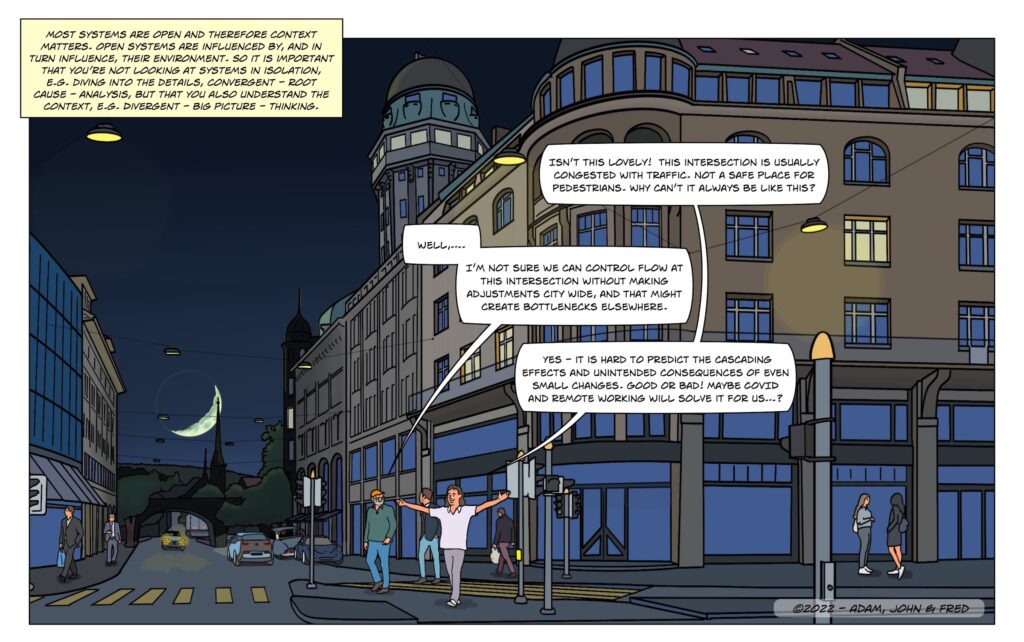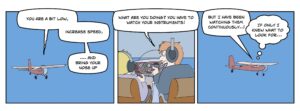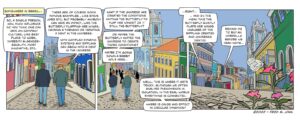
We often identify natural systems with specific functions. For example, a function shared by most life forms is to survive and propagate. And this global function typically depends on many sub-functions such as obtaining nourishment, regulating temperature, and avoiding potential predators. Similarly, the people who come together to create sociotechnical organizations are generally collaborating to achieve some purpose or intention that is beyond the capacity of any of the individuals working in isolation. In fact, an organization may have multiple purposes – to provide a service, produce a product, and/or to make a profit.
The concept of purpose and its role in shaping performance became a primary consideration for both physical and cognitive systems with the development of Norbert Wiener’s Cybernetic Hypothesis and the associated servo-mechanism metaphor. One of the critical attributes of servomechanisms is closely related to the second question mentioned in my previous essay:
Why things stay the same?
In the context of servo-mechanisms this question is typically framed in terms of stability. A system that is stable tends to resist change. For example, healthy animals typically maintain relatively consistent body temperatures, despite changes in the surrounding environments.
Similarly, engineers have designed mechanisms to regulate the temperatures in buildings. These mechanisms allow people to specify a desired temperature and the control mechanism then combines a sensor – that measures the temperature in a room, with an actuator that activates a heating or cooling mechanism whenever the temperature in the room deviates from the desired temperature. This is an elemental form of muddling – in which behavior is adjusted as a function of feedback provided by the sensors. In a similar way, pilots or drivers will adjust their behavior to keep their vehicles on an intended trajectory. For example, skilled pilots will consistently follow a similar safe path to landing at different airports and under different weather conditions. The similar results will be achieved over and over again – yet the behaviors will be different on every occasion due to the different disturbances (e.g., winds) experienced. A servomechanism has been described as a device that achieves the same results, but in a different way each time.
Note that it is impossible to pre-specify the behaviors that will lead to a safe landing for every situation, because each situation will be different. However, the pilots need to learn or tune their perceptual and motor skills to consistently land safely. The pilots need to learn to recognize what it looks like to be on a safe path and they need to know what actions will counter specific disturbances from that path. Thus, landing an aircraft is much more complex than simply activating a heating or cooling mechanism. And of course, keeping large organizations on the appropriate paths to achieve their missions or goals is even still more complex.

The critical thing to understand about muddling is that it depends on the coupling between perception and action.
Muddling requires both situation awareness (i.e., to be able to sense states relative to goals or intentions, and relative to the capacity for action) and it requires the capacity to act (i.e., to be able to move toward more desirable states or to counter disturbances to prevent undesirable changes in state). Skill is an emergent property of the coupling that reflects relations between situation awareness and the potential for action. It can’t be discovered by studying either perceptual or motor components of an organism in isolation. Further, to the extent that the perceptual and motor systems evolved to serve certain functions (e.g., to control locomotion), it is unlikely that these components can be fully understood without considering the functions that they support. This also applies to large organizations – to fully understand the components and processes of the organization it is essential to consider the ultimate functions, purposes, and value systems that the organization serves.
Another important consideration with respect to organizations that have a closed-loop coupling of perception and action is associated with explaining ‘why’ the organization behaves as it does. To understand an open loop organization, we typically look for causes, which are typically prior events (e.g., the preceding dominoes in the chain of actions and reactions). However, to explain why a closed-loop organization behaves the way it does, we have to ask “what is the function or purpose?” of the organization. In other words, we have to ask what is the organization’s goals or what is it attempting to achieve. Whereas, behavior of open-loop systems tend to be the effects of prior causes or reactions to past events, closed-loop systems typically are attracted by goals or in pursuit of potentially satisfying future events.
Thus, the behavior of closed-loop systems does not conform to the cause-effect (or stimulus-response) narratives that have been used to describe many isolated physical systems.
Although change is pervasive, with skilled muddling many organisms and organizations actively counter many undesirable changes and often they are able to achieve some degree of stability around states that they find to be satisfying. These satisfying states are typically referred to as the function or purpose of the organizations. For example – achieving and maintaining a specified temperature is the purpose of a temperature regulator; keeping their vehicles in the field of safe travel is the function of pilots or drivers; achieving and maintaining a successful company is the function of corporate executives.
In simple terms, pursuing and maintaining satisfactory states are what organizations do!
However, as suggested in the previous essay, it would be naive to associate the purpose or goals of a complex organization with the ideas in an executive's head or even with the organization's mission statement. These may or may not align with the actual purpose or function of an organization. Unlike the heating control system that is designed by an engineer, complex organizations are self-designing or self-organizing. Thus, stability is an emergent property of organizations reflecting the muddling and mutual adjustments of multiple components.
Ultimately, the proof of the function or purpose is in the doing.
And the doing involves dynamic interactions across all the components, as well as the impacts from the environment. The CEO can't just flap her wings and determine the future trajectory of the organization. Ultimately, the purpose emerges from interactions involving all the components within the organization.

